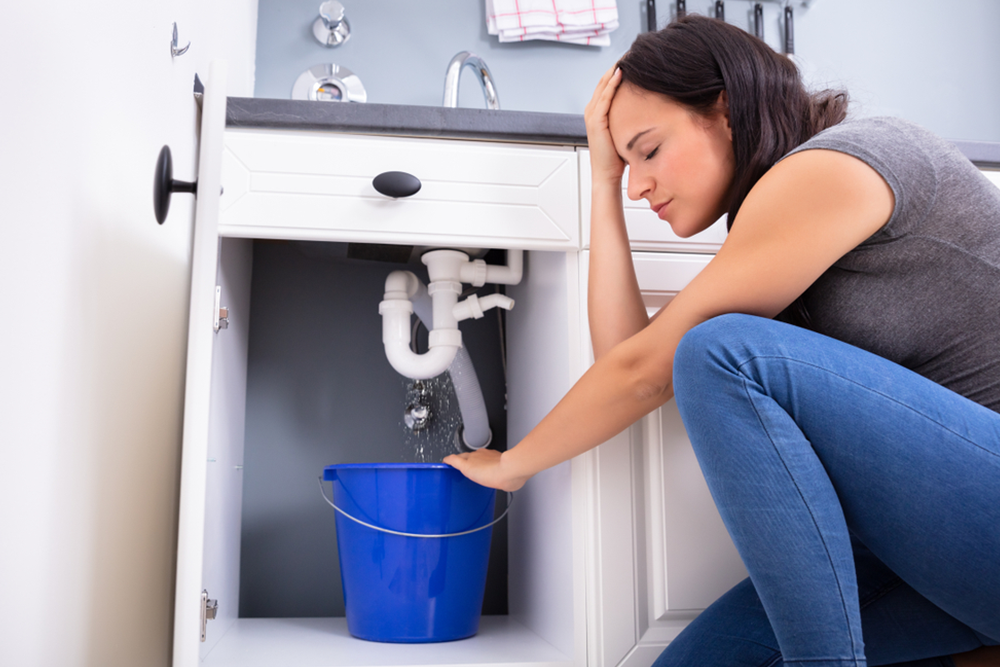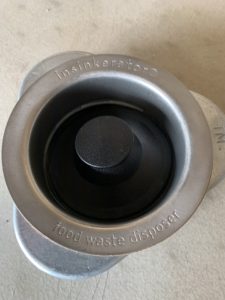Straightforward Steps to Stop a Leak in Your Garbage Disposal
Straightforward Steps to Stop a Leak in Your Garbage Disposal
Blog Article
The author is making several great annotation regarding Garbage Disposal Leaking From Bottom as a whole in the content down below.

Waste disposal unit are important kitchen area home appliances that assist in disposing of food waste effectively. Nevertheless, a dripping waste disposal unit can be a frustrating and messy issue to take care of. Fortunately, many leaks can be repaired easily with a few simple steps. In this article, we will discuss just how to deal with a leaking waste disposal unit effectively.
Intro
Waste disposal unit are mounted under kitchen area sinks and are designed to shred food waste into smaller items, allowing it to go through the pipes system quickly. While these gadgets are typically trustworthy, leakages can occur with time due to deterioration, loosened links, or damages to the device.
Typical Reasons For Leakages in Waste Disposals
Worn Seals and Gaskets
Seals and gaskets play a crucial duty in preventing water from dripping out of the waste disposal unit. Over time, these components can wear away, resulting in leakages around the disposal unit.
Loose Links
The connections between the waste disposal unit and the plumbing system can become loosened gradually, creating water to leakage out during procedure.
Fractures or Holes in the Disposal Unit
Physical damage to the garbage disposal, such as cracks or openings in the real estate, can additionally result in leakages.
Determining the Resource of the Leak
Before trying to take care of a dripping waste disposal unit, it is necessary to determine the source of the leakage. This can usually be done through aesthetic evaluation or by conducting basic examinations.
Visual Inspection
Evaluate the waste disposal unit device carefully for any signs of water leakage. Pay close attention to areas around seals, gaskets, and link points.
Checking for Leaks
One way to evaluate for leakages is by running water through the disposal device and looking for any type of noticeable signs of leak.
Devices and Materials Needed for Fixing a Leaking Waste Disposal Unit
Prior to starting the fixing process, collect the essential devices and materials, consisting of a screwdriver, flexible wrench, plumbing professional's putty, substitute seals or gaskets, and epoxy or patching product for repairing cracks or openings.
Step-by-Step Guide to Repairing a Dripping Garbage Disposal
Shut off the Power
Before attempting any type of fixings, make certain that the power to the waste disposal unit unit is turned off to prevent the danger of electric shock.
Situate the Leakage
Determine the precise place of the leakage and figure out the reason.
Tighten Links
Use a wrench to tighten up any kind of loosened connections between the disposal device and the plumbing system.
Change Seals or Gaskets
If the leak is because of used seals or gaskets, eliminate the old parts and change them with brand-new ones.
Patching Cracks or Holes
For cracks or holes in the disposal device, use epoxy or an ideal patching product to seal the damaged area.
Examining the Waste Disposal Unit After Repair
As soon as the repair is complete, check the waste disposal unit by running water through it to guarantee that the leakage has actually been settled.
Preventive Maintenance Tips to Prevent Future Leaks
To prevent future leaks, it is vital to perform regular upkeep on your waste disposal unit. This includes keeping it clean, avoiding putting non-food products or tough objects down the disposal, and regularly looking for leaks or various other concerns.
Conclusion
Finally, repairing a dripping garbage disposal is a relatively straightforward process that can be completed with standard tools and products. By following the actions described in this article and practicing preventative maintenance, you can keep your waste disposal unit in good working condition and prevent pricey repairs in the future.
HERE’S HOW TO FIX YOUR GARBAGE DISPOSAL
WHAT TO DO IF SOMETHING IS STUCK IN YOUR GARBAGE DISPOSAL
If the impeller won’t turn, there’s probably something stuck in the disposal. It could be a steak bone or peach pit, although plumbers report pulling all sorts of inappropriate objects out of disposals, such as bottle caps or aluminum foil. Make sure power to the disposal is off, and look inside to see if you can see the source of the jam.
Never stick your fingers in a disposal. Pull out anything you see with tongs or pliers.
If the disposal still won’t work, it may be time to call a plumber or consider buying a new disposal. GEM Plumbing & Heating is here for all of your garbage disposal needs.
WHAT TO DO IF YOUR GARBAGE DISPOSAL DRAIN IS CLOGGED
Take everything out from underneath your sink and put a bucket or other container under your disposal to catch any water that drains out. Disconnect your disposal from the power supply. If it’s plugged into a wall outlet, unplug it. If it’s hardwired into an electrical box, go to the electrical panel and turn off the breaker for the disposal. Pour ¼ cup of baking soda into the drain, followed by ½ cup of white vinegar. Give the solution a few minutes to fizz and do its work. Look into the disposal with a flashlight to see if you can see an object that might be causing the clog. If you see it, remove it using tongs or pliers. MORE TIPS ON DEALING WITH A CLOGGED GARBAGE DISPOSAL
Never use drain cleaner in a garbage disposal. It can damage the plastic parts inside the disposal. You can also be splashed with the caustic liquid while working to clear the clog. Beware! Never stick your fingers into a garbage disposal. Trust us — not a good idea. In many instances, your dishwasher drains through your garbage disposal. This allows the disposal to grind any large food particles that may be drained out of your dishwasher. There are some jurisdictions, however, where the plumbing code prohibits such a connection. WHAT TO DO WHEN YOUR DISHWASHER DRAINS THROUGH THE DISPOSAL
Run some water in the sink so your plunger has at least a ½-inch of water to create a seal and plunge vigorously up and down several times. You may need to repeat this several times. Run hot water down the drain to clear any residue that remains.

As an enthusiastic reader about Why Is My Garbage Disposal Leaking From the Bottom?, I imagined sharing that section was a great idea. Do you know about somebody else who is fascinated about the topic? Why not share it. Many thanks for going through it.
Appointment Report this page